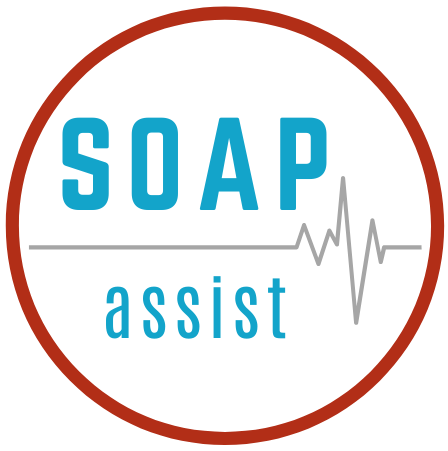The Progress Note
Appropriately named, the progress note details the patient’s condition and how it has changed since the most recent documentation. This note is generally brief. Comprehensive assessment of all prior medical problems is generally not required. This note is intended to update providers and other health care professionals on the patient’s current condition. In this article, we will discuss the important elements of a progress note.
Some providers exclusively refer to the history and physical (or “H&P”) note as a SOAP note. However, the progress note also generally follows the same medical SOAP note format. Keeping with this convention makes progress notes easier to read for other providers.
Most progress notes, and medical SOAP notes generally, include key identifying information. Such information includes the patient’s name, location, and medical record number. This is typically listed at the top of the note. It is intended to ensure that what follows is associated with the correct patient, nothing more.
Below the identifying information, the infamous “one-liner ” will typically make an appearance. The one-liner is intended to summarize the patient’s condition and course. This provides the reader with a frame of mind and what to expect as they read the note. It sets the tone for the medical SOAP note. One-liners are often more than just one line. However, they are typically very brief. There is often “course complicated by” information included as well. This information gives the highlights of the patient’s course. Here is an example:
Patient is a 74-year-old male with a history of diabetes, hypertension, and 30-pack year smoking history admitted for STEMI now status post left coronary artery stent placement. Course complicated by cardiac arrest with subsequent return of spontaneous circulation on day two of admission.
After reading this, other providers have a good understanding of why the patient is admitted. Furthermore, it sets an expectation of what comes next. The reader will expect to see typical workup and treatment for STEMI and cardiac arrest. Deviations from what is typically done in these circumstances are justified in the Medical SOAP Note.
Recent updates are typically detailed after the one-liner. It is an opportunity to document subjective changes in the patient’s condition as well as major recent events. If the patient is awake and alert, the patient’s subjective information is typically documented here.
Objective information such as the physical exam, laboratory, and radiographic findings are typically documented after the subjective information. This information is typically of maximum benefit when it will help drive clinical decision-making and treatment. Data that does not alter the patient’s course should be left out.
The assessment and plan typically appears at the bottom of the note. This is where the money is. The assessment and plan contain all the detailed information with regard to the patient’s active medical issues. We have already said that the progress note adheres to the SOAP note structure. Additionally, the assessment and plan has its own structure and convention. There are two major formats for the assessment and plan, problem-based and system-based.
The most commonly used assessment and plan format is problem-based. This format arranges medical problems in order of most severe/acute to least. The alternative format, the system-based format, is often used in the intensive care unit (ICU) setting. This format arranges the medical problem list according to organ system. This ensures that every organ system is addressed and that nothing is missed. It is especially helpful for complex patients.
Regardless of the way problems are arranged, each problem typically is formatted the same way. Each problem begins with a diagnosis. This diagnosis should be as specific as possible. For example, in a patient admitted with sepsis and gram-negative bacteremia, sepsis secondary to gram-negative bacteremia should be listed. If a patient is known to have sepsis secondary to klebsiella bacteremia, then that should be the diagnosis. A more generic diagnosis, such as gram-negative bacteremia, is less preferable to a more specific one.
After the diagnosis, a brief assessment is typically detailed. This typically includes any important information for other providers in terms of which treatments have been effective for the patient and which have not. Risk and severity scores are often listed here. The plan appears below the assessment of a particular problem. Plans often appear in list format. This is because most plans are made up of a list of treatment items. Grouping these items in a sensible fashion is better for the reader. For example, it is best to list all of the labs that will be obtained in one area and all the medications in another. This helps other providers find important information quickly.
As we have discussed, the progress note is intended to be brief, precise and, ultimately, a helpful reference for other providers. At SOAPassist, we understand that utilizing templates helps to accomplish all of these objectives. SOAPassist’s SOAP Note Generator produces online soap notes from templates selected by the user. The result is a custom medical SOAP note. Providers can also choose their SOAP note format. Templates can be instantly rearranged into a problem-based or system-based progress note format. Creating progress notes is as easy as selecting the applicable templates.
Disclaimer: SOAPassist curated templates are created for use by licensed medical providers. While they are examples of what a provider might document, their intended purpose is to provide a starting point for documentation and do not constitute medical recommendations.

